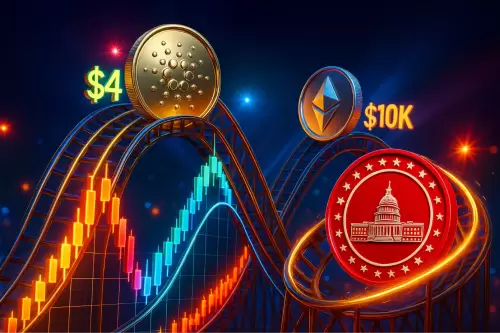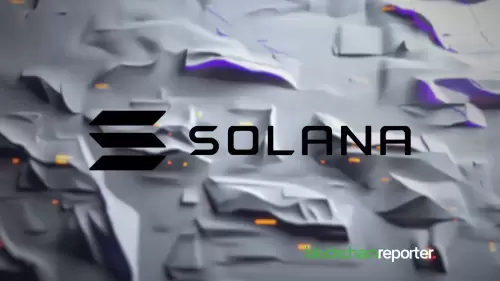 |
|
 |
|
 |
|
 |
|
 |
|
 |
|
 |
|
 |
|
 |
|
 |
|
 |
|
 |
|
 |
|
 |
|
 |
|

In the bustling landscape of cryptocurrency, few assets command the attention and discussion like Ethereum. Having burst onto the scene in 2017 as a key part of the ICO craze and later in 2021 with NFTs and DeFi, "ETH" has certainly been a hot topic.
Naturally, this interest translates to Google Trends, where surges in searches for "Ethereum" signaled periods of hype and public fascination. However, today, something feels different. Despite a recent bounce in price that saw ETH break $4K again in 2024 fueled by ETF approvals and growing institutional interest, Google Trends shows a surprising statistic: searches for "Ethereum" have fallen more than 80% from their peak. There's no viral buzz or frenzied googling, just...silence.
So what happened? Has everyone lost interest in Ethereum?
Well, not quite. The truth is, Ethereum has outgrown the retail hype machine that Google Trends usually measures. Those searches and trends used to tell the whole story, but that story is changing.
In this article, we'll break down how Ethereum's search popularity has risen and fallen over time, why retail interest no longer drives the market like it used to, and what this shift tells us about where Ethereum is likely headed next.
The ICO boom: Ethereum's first brush with the mainstream (2017)
Back in 2015 and 2016, Ethereum was barely a blip on the mainstream radar. A novel blockchain project with big ideas, but limited public attention. But that all changed in 2017 with the arrival of the ICO boom.
Ethereum became the go-to platform for launching Initial Coin Offerings, and suddenly, it was everywhere. Startups promised to revolutionize everything from file storage to coffee distribution—as long as you sent them some ETH. Retail investors, caught in the gold rush, needed ETH to participate. And as the demand for tokens soared, so did curiosity.
Google Trends captured it all in real time. Searches for "Ethereum" skyrocketed throughout 2017, tracking step-for-step with ETH's price climb. By the end of the year, Ethereum was trading at around $800. A few weeks later, in January 2018, it hit a then-record high of roughly $1,432. And that's exactly when Google searches for Ethereum hit their own cycle peak.
Techies weren't the only ones talking anymore. Ethereum had gone mainstream. Dinner tables, Discord chats, even cable news shows were discussing it. At its peak, global search interest hit nearly 40 on Google's index—an all-time high at the time and a clear sign of the retail frenzy that had taken over.
The dynamic was simple but powerful: the more people searched "What is Ethereum?," the more they learned, and the more they bought. Retail FOMO fed itself. It was curiosity turned capital—and it helped kick off Ethereum's first true hype cycle.
2018–2020: Collapse, silence, and the DeFi spark
The 2017 party didn't last. Like most speculative manias, it ended quickly, and Ethereum's fall from grace was swift.
As the ICO bubble burst in early 2018, ETH's price plummeted. Google Trends told the same story: global search interest for "Ethereum" dropped off a cliff, falling more than 90% from its January 2018 high. By mid-2018, Ethereum's Trends index was in the single digits. And by early 2019? It was practically scraping the floor.
Public interest froze. Ethereum went from the hot new thing to background noise. The curious had moved on. For the better part of two years, "Ethereum" barely registered on Google's radar. It was just another example of the deep freeze that gripped the crypto market at large.
But while retail attention disappeared, developers kept building. In mid-2020, Ethereum saw a spark: the rise of Decentralized Finance, or DeFi. Platforms for lending, trading, and yield farming exploded in popularity among crypto insiders. The so-called "DeFi Summer" brought ETH back into the spotlight, at least within the crypto community.
Google Trends picked it up, but only modestly. By late 2020, search interest for Ethereum had risen from its basement lows but was still just a fraction of the 2017 peak. The revival was real, but it wasn't viral. Ethereum's ecosystem was growing again, but mainstream curiosity hadn't quite caught up.
2021: Ethereum mania hits a new high
Let me put it this way. If 2017 was Ethereum's coming-out party, 202
免责声明:info@kdj.com
所提供的信息并非交易建议。根据本文提供的信息进行的任何投资,kdj.com不承担任何责任。加密货币具有高波动性,强烈建议您深入研究后,谨慎投资!
如您认为本网站上使用的内容侵犯了您的版权,请立即联系我们(info@kdj.com),我们将及时删除。
-

-

-

- 花式农场野餐:在2026年美国众议院比赛中偷看
- 2025-08-05 08:04:52
- 肯塔基州的幻想农场野餐为2026年的美国众议院提供了一个舞台,适应不断发展的政治景观,并提出了早期开始竞选季节的信号。
-

-

-

-

-

-






























































